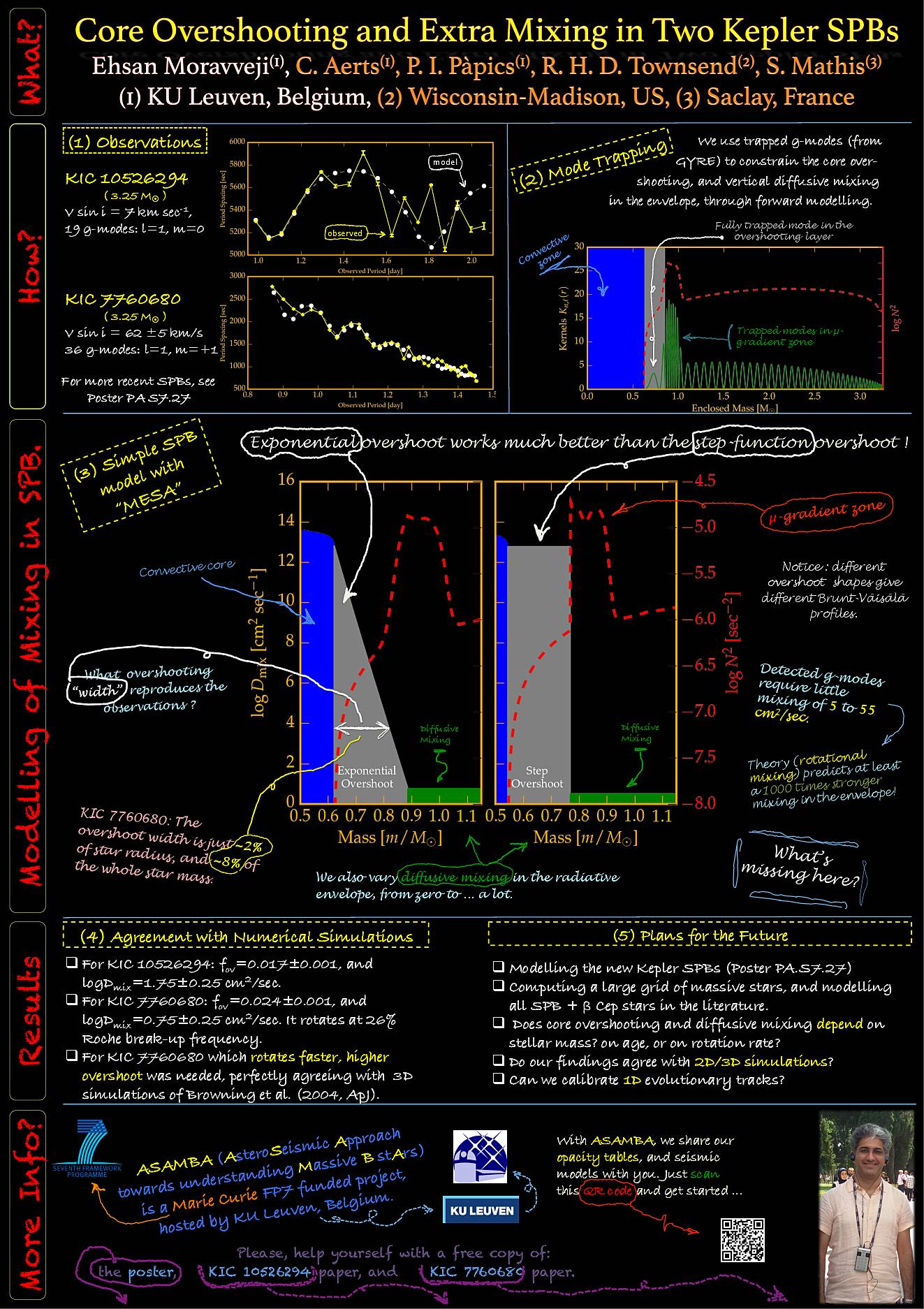Affiliation
Institute of Astronomy, KU Leuven
Main category
Natural Sciences (Astrophysics and Astrononmy)
Abstract
KIC 7760680 was discovered by Papics et al. (2015) to be the richest known Slowly Pulsating B star, by exhibiting 36 consecutive dipole prograde (l=1, m=+1) gravity (g-) modes. Moreover, the monotonically decreasing period spacing of the series, in addition to the local dips in the pattern confirm that this star is a moderate rotator, with clear mode trapping in chemically inhomogeneous layers. This star, thus, constitutes a great laboratory to probe mixing and transport processes in pulsating rotating massive stars. We compute a dense MESA (Paxton et al. 2011, 2013, 2015) grid of evolutionary tracks by varying initial mass, metallicity, overshooting and diffusive non-standard mixing in the radiative envelope. We employ GYRE (Townsend & Teitler 2013) to compute high-order dipole prograde g-mode frequencies using the traditional approximation of rotation to incorporate the effects of the Coriolis acceleration on g-mode frequencies. This detailed forward asteroseismic modelling reveals that KIC 7760680 is a moderately rotating B star with a mass ~3.25 Msun. By simultaneously matching the slope of the period spacing, and the number of modes in the observed frequency range, we deduce that the equatorial rotation frequency of KIC 7760680 is 0.4805 1/day, which is 26% of its Roche break up frequency. The relative deviation of the model frequencies and those observed is less than one percent. We succeed to tightly constrain the convective core overshooting. We demonstrate that an exponentially-decaying model with its parameter fov=0.024 ± 0.001 allows a better agreement than those with a classical step-function overshoot. This also means that convective core overshooting can coexist with moderate rotation. Finally, we constrain the best value for diffusive non-standard mixing in the radiative stable envelope to be confined to log D_ext=0.75 ± 0.25, where D_ext (in cm^2/sec is the effective diffusivity. This is three to ten orders of magnitude smaller than the current theoretical predictions. This can be the signature of a weak differential rotation and of an efficient transport of angular momentum in the vertical direction.
Further reading
http://adsabs.harvard.edu/abs/2016ApJ...823..130M
http://adsabs.harvard.edu/abs/2015A%26A...580A..27M
Do you have problems viewing the pdf-file? Download poster
here
If the poster contains inappropriate content, please
report the poster. You will be redirected to the landing page.
